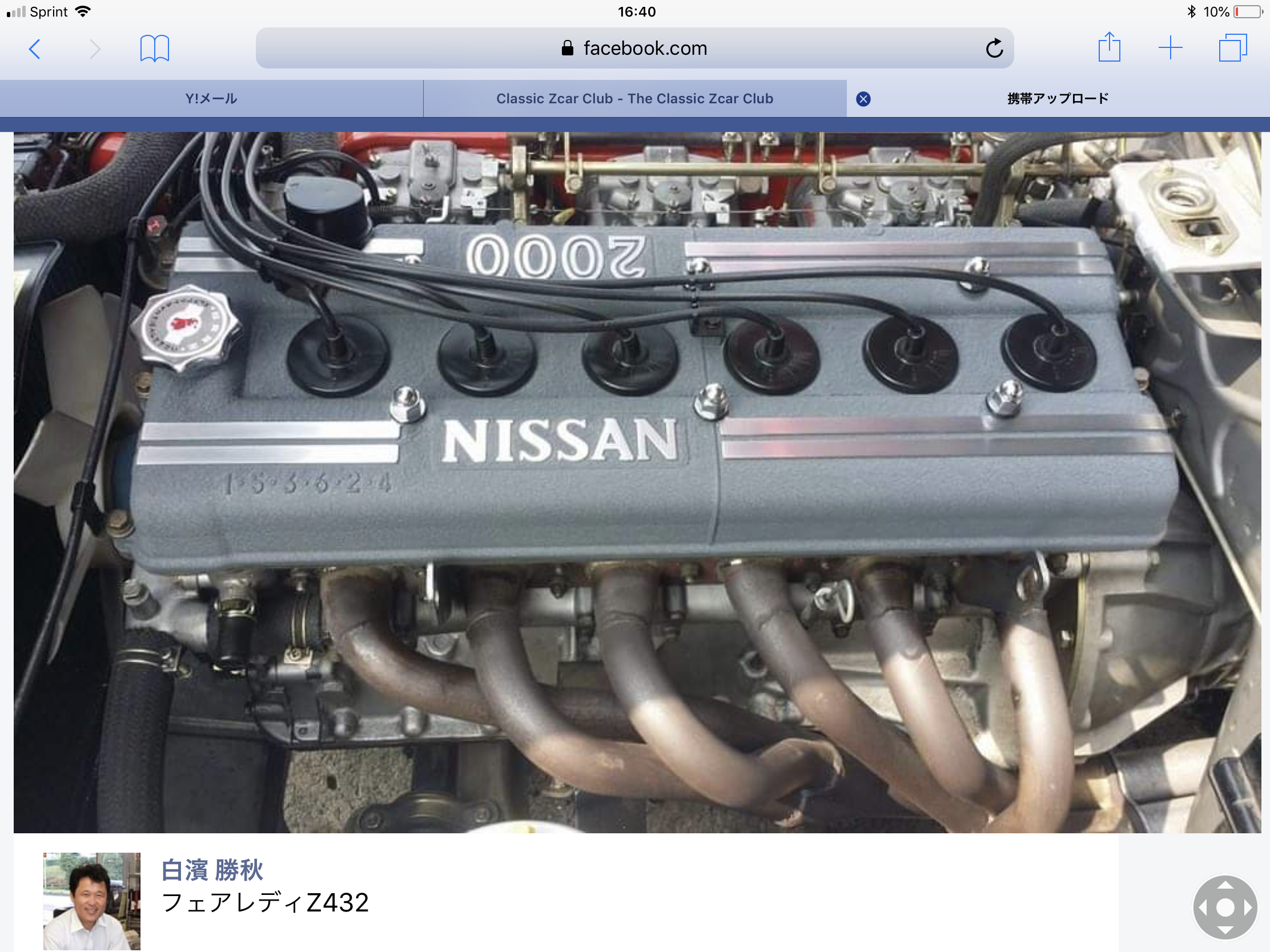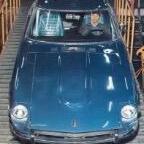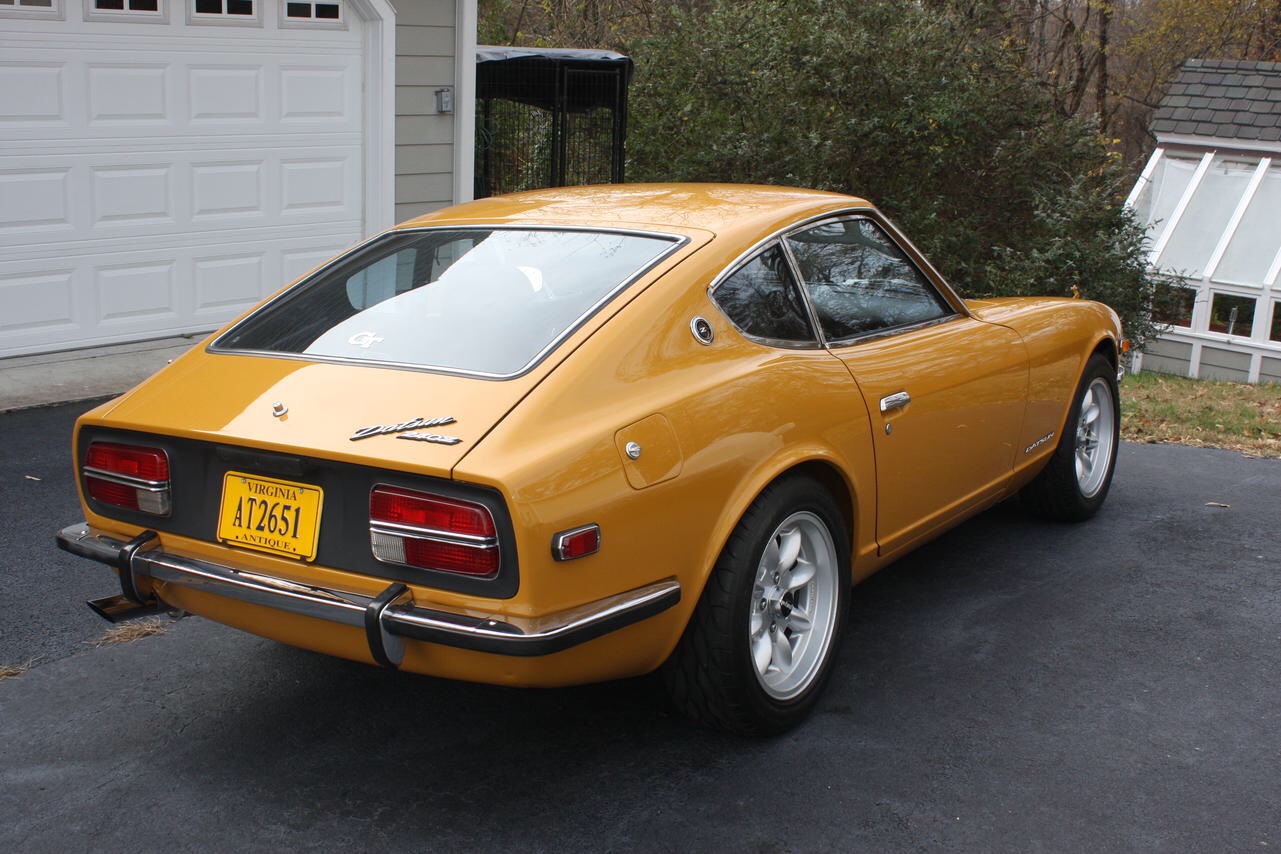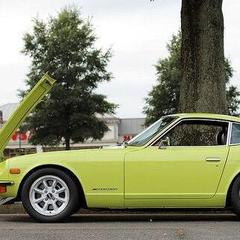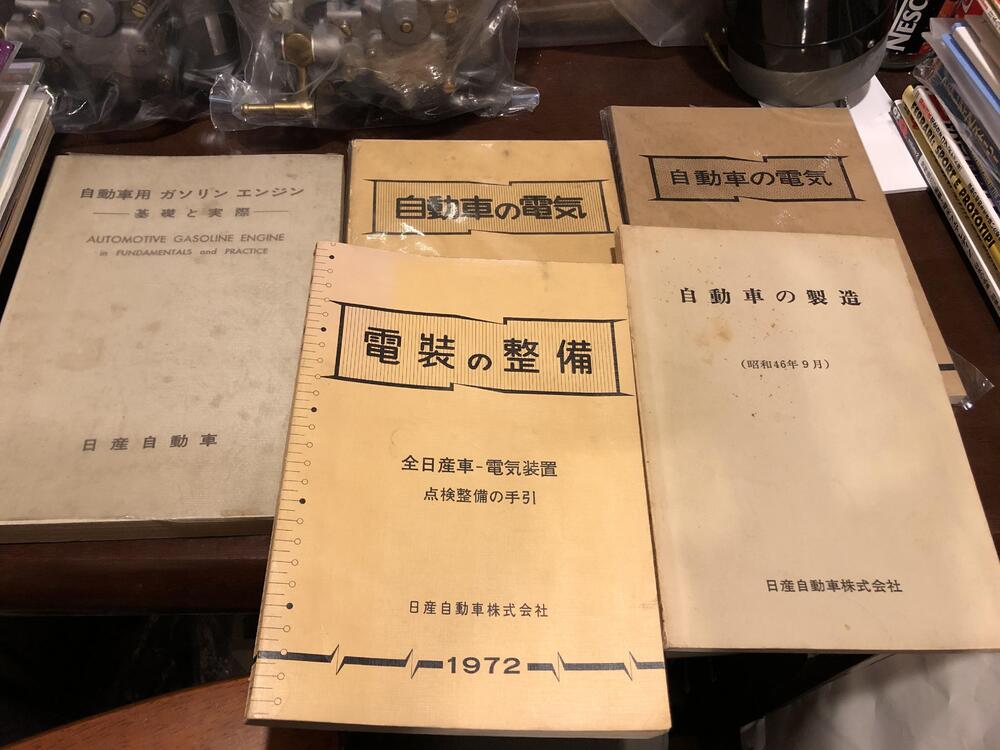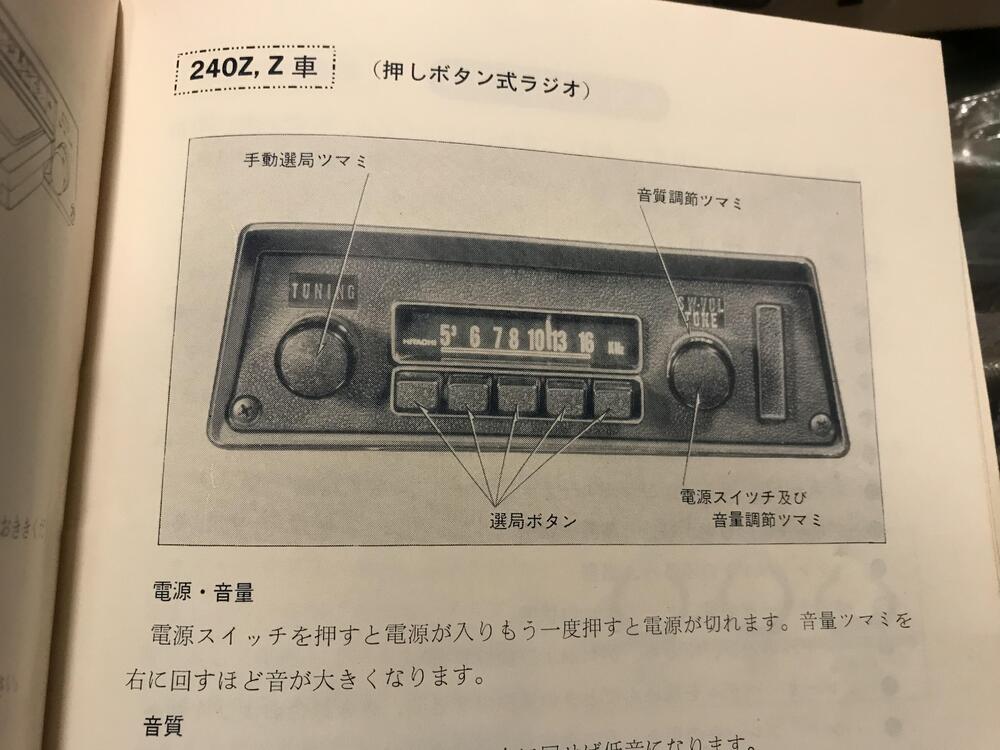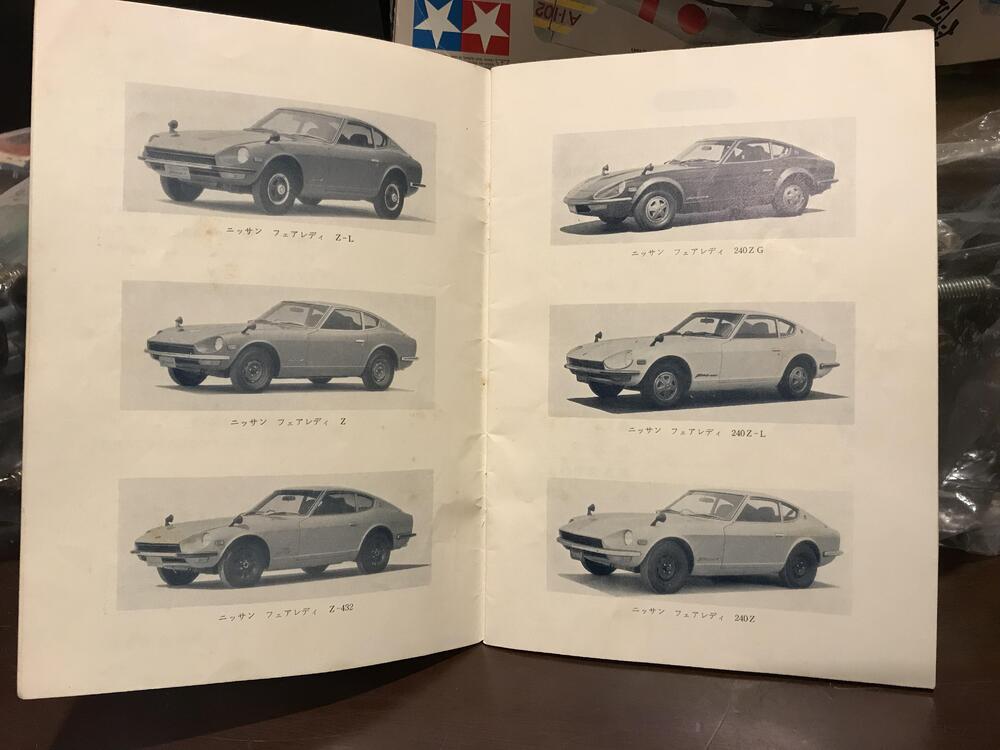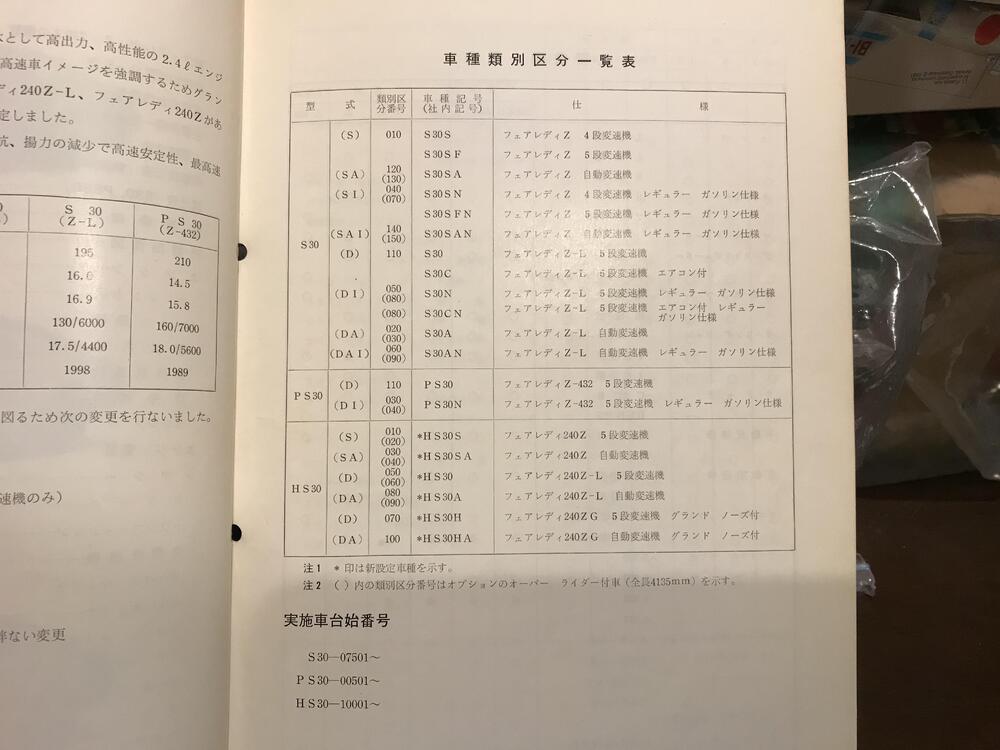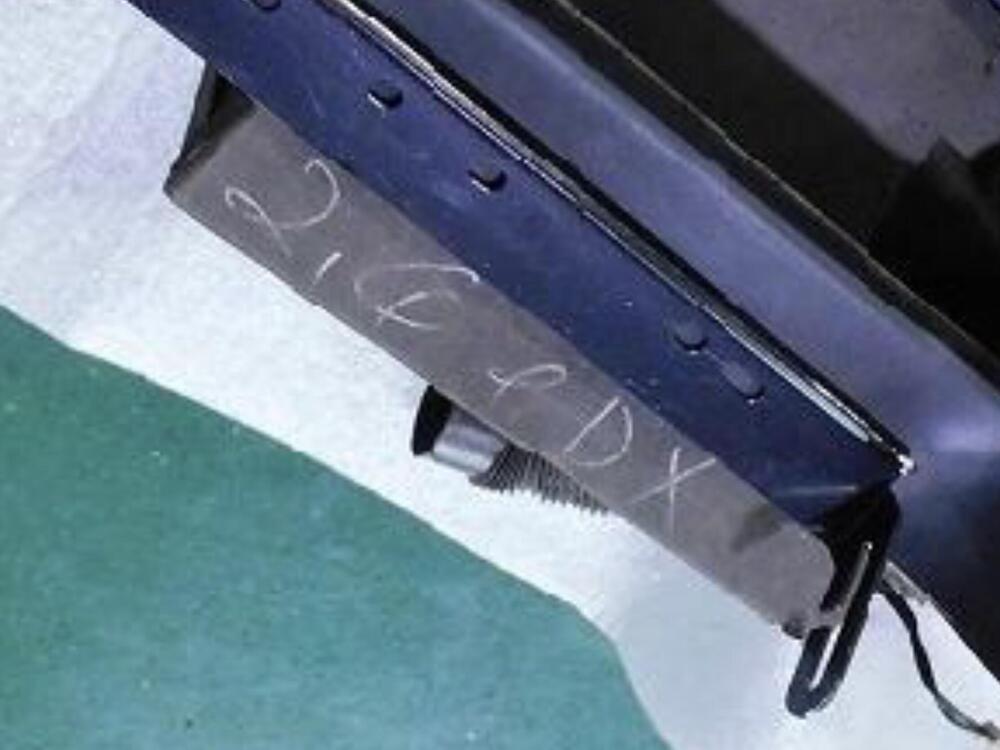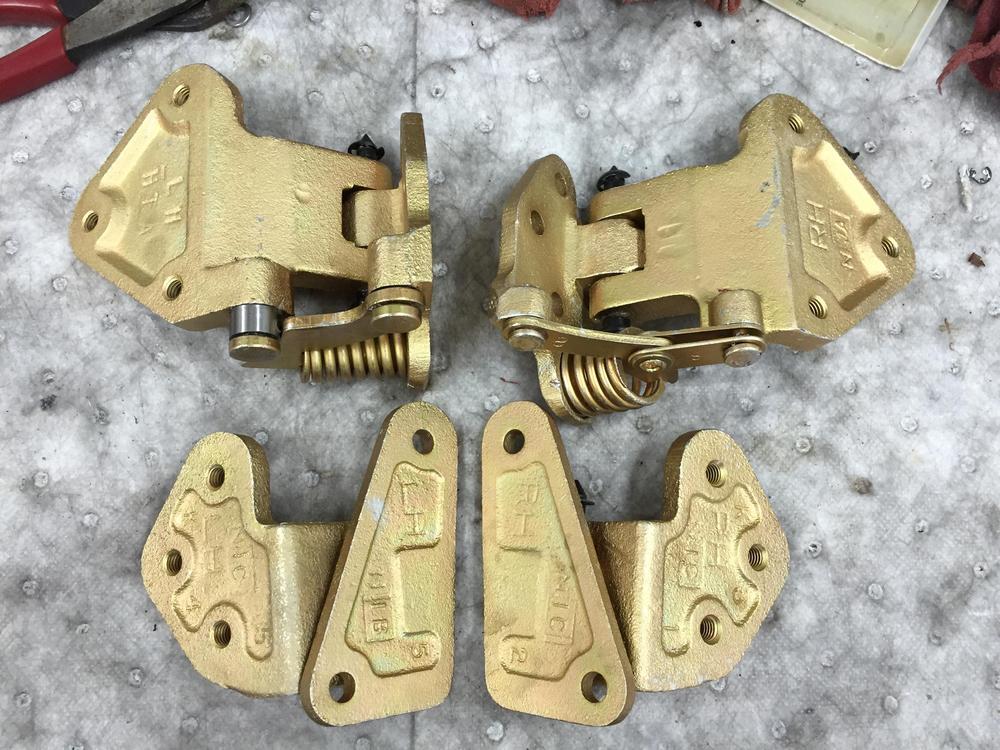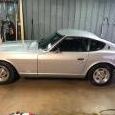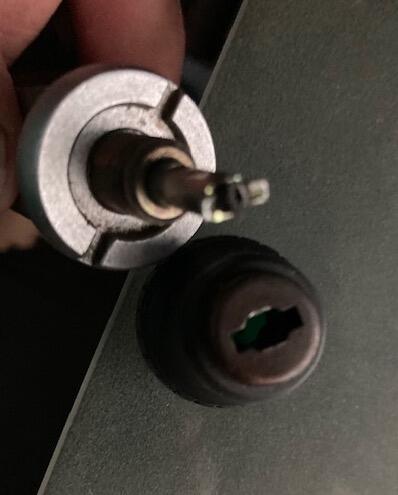This is another example, we see “ 2,4 L(cursive) DX “ on it . I imagined when workers saw this chalk markings, they would have had been reminded that cars needed black wiper blades, scallop style wheel caps, horizontal bar type front grille .
However , don’t need over fenders, G -nose , gun metallic rear bumper with full rubber guards. 6.45 -14 applied, 175 HR14 is for 240ZG only.
Oh , after October 1971 Fairlady 240ZG/240Z-L/ Z-432 and Fairlady Z-L were equipped with an auto seeking radio coupled with an 8 track stereo.
Fairlady 240Z and Fairlady Z were equipped with a manual tuning radio ( not a stereo) and manual extension antenna.
Fairlady Z S30S (simple? ,basic ?)
Fairlady Z-L S30 ( Luxury )
Fairlady 240Z HS30S (simple ? basic ?)
Fairlady 240-L HS30 (Luxury)
Fairlady 240ZG HS30H (High speed ?G-nose)
Fairlady Z-432 PS30 ( Prince? S20 engined)
Fairlady Z-432R PS30SB ( Special Bersion / typical Japanese phonetic )
And more variations for regular gasoline/ air conditioner/ automatic transmission.
Nissan used different coding in a parts catalog and for workers at assembly line . Please see attached picture.
DX comes from “Z-dx “ , which is used for S30 / HS30 / PS30 . The glove box came from a Fairlady 240Z-L .
So , “2.4 L DX “ is a short and simple identification but very much telling deep specific configuration .
Very complicated for us ,maybe for workers too…
Kats
